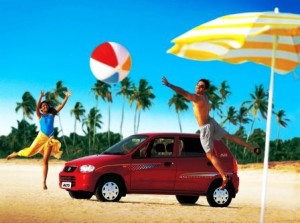As Internet use among new-vehicle shoppers in India grows, increasing numbers of buyers are rejecting and selecting specific models before visiting dealerships, according to the J.D. Power Asia Pacific 2009 India Escaped Shopper Study released today.
The study, which analyzes the reasons why consumers consider a vehicle model, but ultimately purchase a different make or model, finds that 69% of new-vehicle shoppers report having visited a dealership in 2009, compared with 82% in 2008. Power interprets this drop as an increasing proportion of vehicle shoppers are rejecting certain models without ever visiting dealerships.
Since web use and web trends are global, differing only in nuance, the latest study has implications for automakers and car buyers in all markets.
The study finds a greater proportion of new-vehicle shoppers use the Internet to find information about makes and models –increasing from 21% in 2007 to 34% in 2009. Technical specifications, vehicle price, vehicle features or accessories, and vehicle brochures/pictures are the topics most frequently researched by new-vehicle shoppers on the Internet.
In addition, the percentage of shoppers who seek information from friends and relatives during the vehicle selection process has increased from 70% in 2007 to 74% in 2009.
“Due to the prevailing economic conditions, shoppers are carefully considering and researching their options and are increasingly seeking information from unbiased sources,” said Mohit Arora, senior director at J.D. Power Asia Pacific, Singapore.
“By gathering information from the Internet and advice from friends and relatives, shoppers have the ability to examine models on their consideration lists at their own convenience and without necessarily visiting dealerships,” Arora concluded.
The study also finds prospective new-vehicle buyers in 2009 are more likely to have already decided which specific make and model they want to purchase when they first visit the dealership, compared with previous years.
The percentage of shoppers who indicate that they knew the exact model they wanted to purchase when they first began to shop for a vehicle has increased from 71% in 2008 to 74% in 2009.
In addition, among prospective buyers who visited a dealership, 80% actually purchased a vehicle in 2009–up from 77% in 2008. This increased “close rate” indicates that buyers who visit a dealership are more likely to have pre-determined which model they intended to purchase.
“With less foot traffic entering dealer showrooms, it is also likely that dealerships are putting greater effort into closing deals,” said Arora.
The study finds that price continues to be the most frequently cited reason for vehicle rejection, with nearly one-third of shoppers rejecting a model because the price was too high. Exterior styling is the next most frequently cited reason for rejection. Rejection due to the delivery period being too long is cited more often by rejecters of newly launched models, compared with rejecters of existing models.
For a fifth consecutive year, Maruti Suzuki performs well in persuading shoppers to purchase the brand, with 40% of all shoppers eventually purchasing a Maruti Suzuki model. Buyers of Mahindra-Renault and Hyundai vehicles tend to shop around the most before purchasing their vehicles, while buyers of Mahindra, Maruti Suzuki and Tata vehicles are least likely to consider another model during the shopping process.
The 2009 India Escaped Shopper Study is based on responses from more than 5,400 buyers and nearly 2,000 rejecters of new cars and utility vehicles who purchased their vehicles between September 2008 and April 2009. The study was fielded from March to June 2009.

